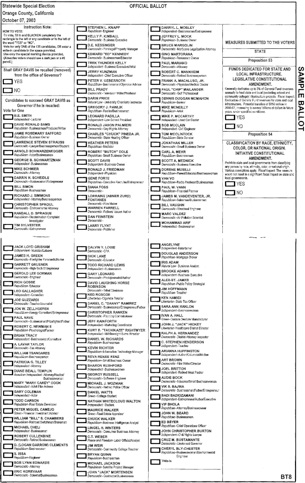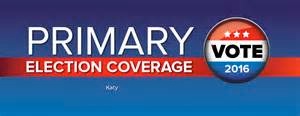New Models for Elections
The old saying, “If it isn’t broken, don’t fix it,” is good advice. Some fixings break more than they correct and cost a lot more than leaving things alone.
The modern version of the opposite side of that coin, “If it’s broken, replace it,” is also good advice. Good repairmen are hard to find and expensive, so replacement is often the only option.
There is a big breakdown nationally. Replacement may be the only answer, but maybe it can be fixed with some major changes.
The election system is badly broken. There are too many election days, the ballots are too long, and the allocation of votes and/or delegates is rigged to favor certain interests.
These faulty parts are so intertwined that it is difficult to fix just one at a time.

Complicating that page or two of boring choices will be another list of candidates for county offices that should be filled by appointment rather than election.
The selection of judges could be improved by adopting one of several simplified procedures in other states. Under these systems, judges are appointed by the governor or the state supreme court. Thereafter, each judge faces periodic “retention” elections where the only “candidate” is the incumbent and the vote is to either retain or not retain him in office. The judges are also subject to removal or discipline by judicial review commissions.
A similar system was proposed, but rejected, for Texas about 60 years ago. Maybe it is time to try it again.
As for county offices, the illogical arrangement ingrained in the state’s ancient constitution was discussed here before.
Consider this. In cities with enormous budgets and administrative functions, the police chief, tax collector, clerk, etc. are appointed and administered by the city council.
In counties, however, the sheriff, county clerk, tax collector, etc. have the frustration of expensive election campaigns every four years. Then they have to go to the County Commissioners’ Court for a budget and permission to move funds within the budget.
The Commissioners’ Court controls everything the county officials do except who holds the office. Does that make sense?
If judicial offices, constitutional amendments, and nearly all county officials were removed from ballots, the ballots would be so short that national, state, county, city, and school board elections could be included on one ballot. Then there could be just one election, plus run-offs, every two years. That might double or triple the number of voters who would make the effort to vote each time.


Aggravating this already complicated system is the way “delegates” are allocated for the competing candidates. If there are to be delegates, shouldn’t the candidate who wins a majority of the votes statewide get all of the delegates?
Complicate this further with the super delegates who are chosen by some secret process among power brokers. Where is the will of the people in that process.
Also, there is no way to determine how the outcome in early voting state “A” may influence votes in state “B” three weeks later.
A national election day for all state primaries to select Presidential candidates with the candidates who receive a majority of the votes cast in all 50 states being the party nominees would reduce the unceasing “politicking” by months.
There would be no need for delegates pledged to a candidate to be nominated at the national convention. The candidates would already have been determined by the majority of votes in all the states.
Delegate to the national conventions to discuss policy, platforms, and vice presidential candidates could still be included on the ballots.
So here’s the perspective.
Our election process is broken. It is beyond repair. There are, however, several new, tested, and proven models for replacement.
Like any new object, a new election procedure would require a short break-in period. Once the indicated adjustments are tweaked, most would say, “Why didn’t we buy this a long time ago?”
Hurry and bring on the new model?
enough





